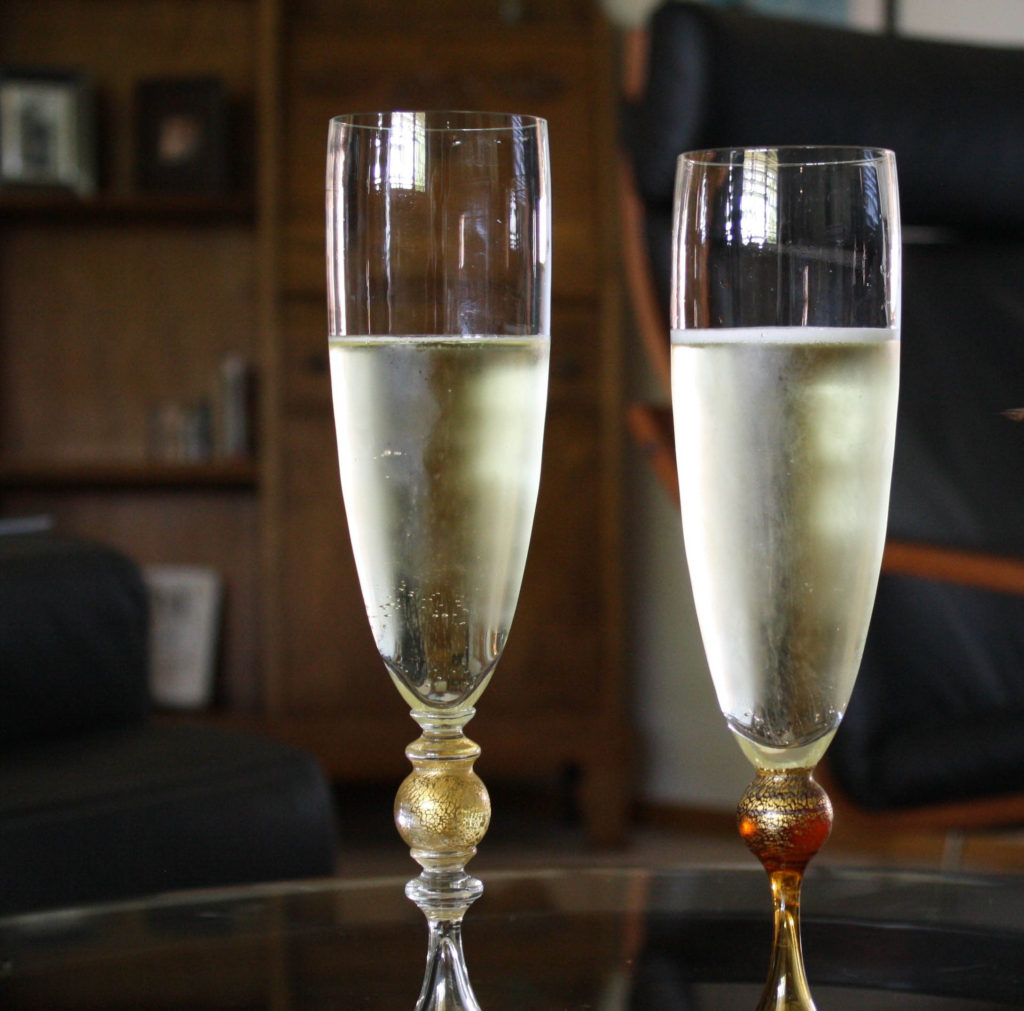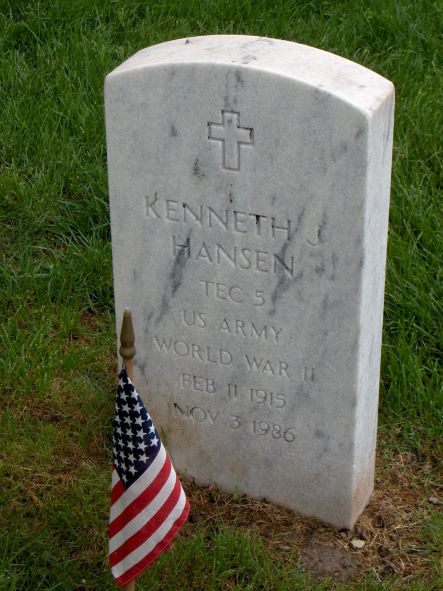
Thank You Veterans


Map and Atlas Museum of La Jolla
If maps are of interest to you, take some time to explore the Map and Atlas Museum of La Jolla. This is not a typical museum.
For one thing, it’s smaller than most museums. It’s more than an educational visit as well. The goal is to create an awareness and appreciation for history, geography, and politics of the world. The artistic beauty and sheer magnitude of the collection will surprise you.
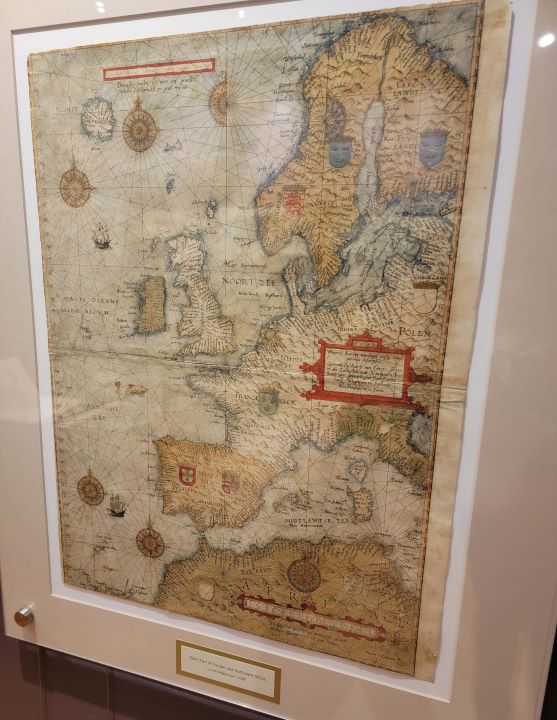
Wander though and look at maps that depict our world from those who first thought they knew what the world looked like to what it actually is today. You might be amazed at how close some were and how almost accurate others were.
Many explorers mapped out the geography as they traveled, giving others a glimpse of what the world as they knew it looked like. These are original maps. Fun depictions of Disneyland to San Diego’s Oil Fields to a map of the world from 1472 might be on display.
The permanent exhibition includes maps from a copy of 1472 map by Isadore of Seville, which is considered to be the first printed map. There’s also a tourist map of Southern California. Quite the eclectic group.
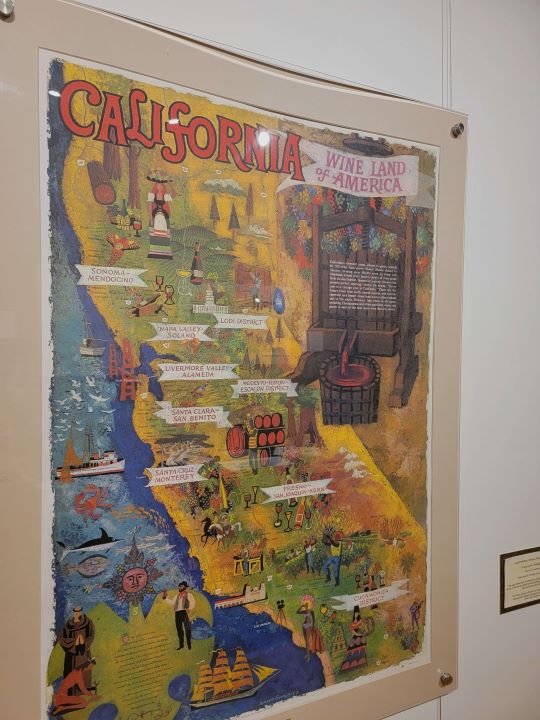
Island maps, sea charts, celestial maps, the Holy Land, maps by Benjamin Franklin, a rare manuscript map of New England by John Thornton, and so many others are displayed in various rooms.
There is a variety of educational tools and opportunities available for schoolteachers, educators, and the general public as well. This is truly a one-of-a-kind experience.
If You Go: The Map and Atlas Museum of La Jolla is located at 7825 Fay Ave. Suite LL-A, La Jolla. They are open by appointment. Call 855-653-6277 or email roz@lajollamapmuseum.org
Mission San Luis Rey
Discover history of California Missions with a visit to Mission San Luis Rey in Oceanside, California.
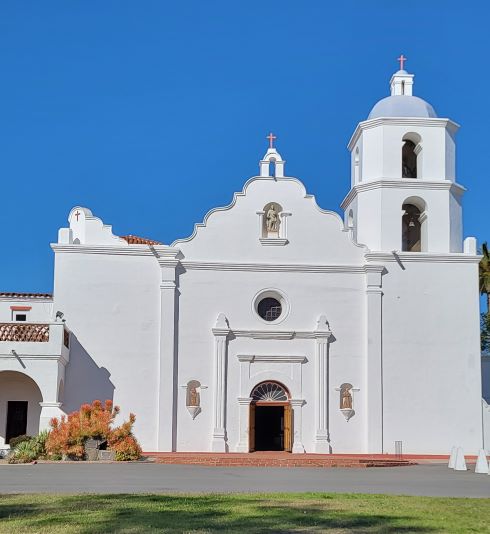
First some history:
Father Fermin Lasuen, successor to Father Junipero Serra, founded Mission San Luis Rey in 1798. This was the 18th mission in the chain of 21 missions in Alta California.
Mission San Luis Rey was named after King Louis IX of France, a 13th century king known for his compassion for the poor.
Prior to Spanish occupation, the Luiseno people inhabited this area for hundreds of years. Luiseno homes were dome-shaped, using a branch frame. The chief and shaman made and upheld the laws of the village. The men hunted and fished and the women gathered plants and food. Pestles for grinding were made as were baskets.
Missions were not authorized until the threat of Russian encroachment into the area in Alta California. Spain had learned to claim land by establishing a mission and sending dedicated padres with a few soldiers. The Mission San Luis Rey became home to over 3,000 Indians, 50,000 head of livestock, and large land cultivation. Grapes, oranges, olives, wheat, and corn were irrigated by water channeled from a nearby river. By 1830, the Mission was the largest building in California.
Throughout the years Mission San Luis Rey flourished and then decayed. In 1892 a group of Franciscans from Zacatecas, Mexico sought refuge at the Mission. From 1892 to 1912 the church, living quarters, the quadrangle, and barracks were rebuilt. This Mission restoration and preservation is an ongoing process and archaeological investigators continue to unearth the Mission’s past.
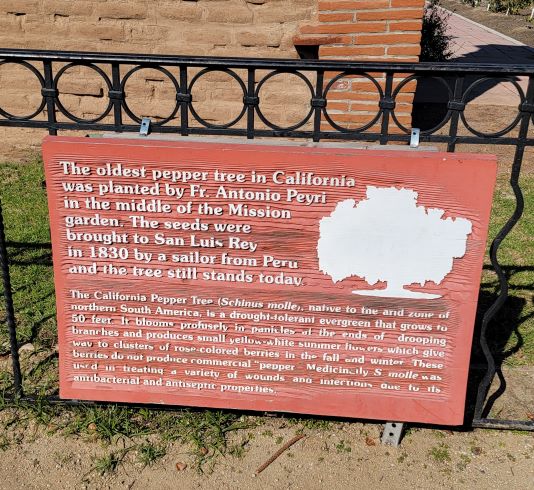
Some other quick facts:
We spent a morning taking the self-guided tour of Mission San Luis Rey. The period rooms portrayed life as it was throughout history. Ranging from the lifestyle of the Luiseno Indians to the Friars’ bedrooms to the Mission kitchen to way the Mission San Luis Rey is today. The original Lincoln Document which returned the Mission to the Church is included in one room.
Entering through the front doors of the Historic Mission Church, we first noticed the Spanish Colonial architecture. Both Baroque and Classical styles were represented throughout. Paintings and decorations showed the combination of Spanish and Indian cultures.
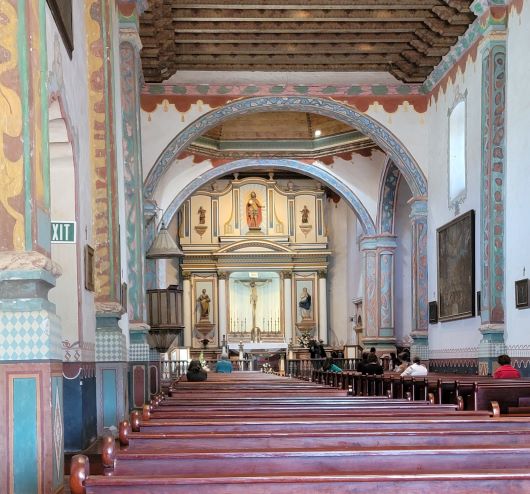
Wandering through the cemetery we noticed grave markers dating as far back as 1800 and up to 2020. The ruins of the adobe barracks that once housed Spanish soldiers assigned to protect the Mission San Luis Rey are well preserved.
Not to be missed is the oldest pepper tree in California. Even from the gates of the courtyard, this tree is impressive.
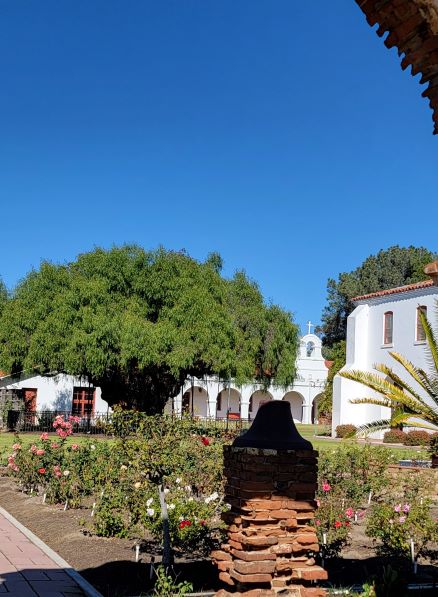
When you want a glimpse of life in a Mission, understand how Missions affected California history, and discover the rich history surrounding a National Historic Landmark take some time to visit Mission San Luis Rey.
If You Go: Mission San Luis Rey is located at 4050 Mission Avenue, Oceanside, CA.
Visit http://www.sanluisrey.org for more information
Le Diplomate Restaurant
Check out our favorite French restaurant in Washington, D.C., Le Diplomate. Walk out of the sweltering heat on a summer day into the cool interior of Parisian brasserie.
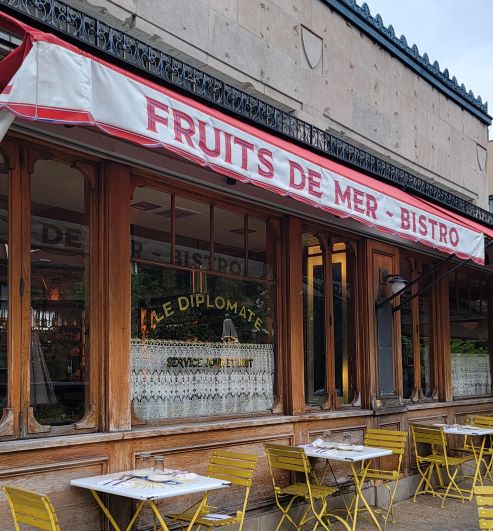
This historic building is now home to a bustling yet comforting French brasserie. Both the interior and exterior transport you immediately to a sidewalk in Paris. The menu doesn’t disappoint either. With a variety of Gallic classics, you can dine on onion soup gratinee, steak frites, escargot, bouillabaisse, and cassoulet. Pair those with a glass or wine from their curated wine list or choose from one of their specialty cocktails. Either way you will think you’re in France.
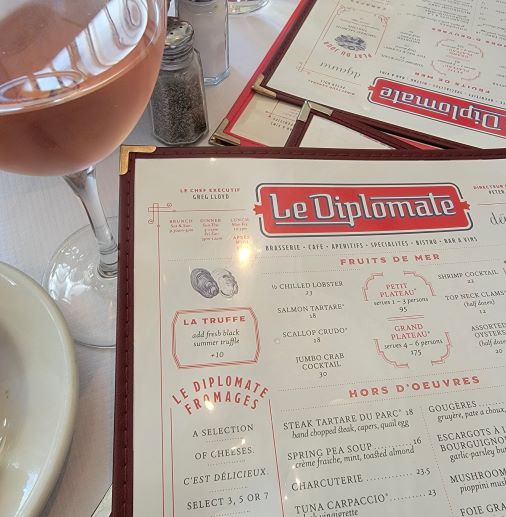
Check out more at https://lediplomatedc.com
If You Go: Le Diplomate is located at 1601 14th Street, NW in Washington, D.C.
Grains d’Argent Hotel
During our recent stay in the Champagne area of France, we spent a few nights at the Grains d’Argent Hotel. Located just four kilometers from Epernay and only 29 kilometers from Reims, many of the Champagne houses we were visiting were less than 10 minutes away.
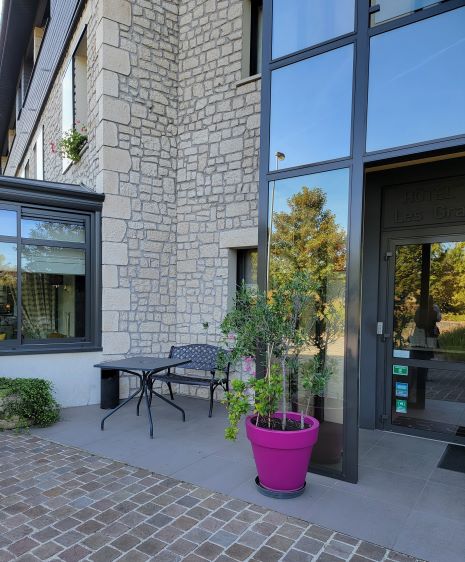
Not only was this in an ideal spot, it was an absolutely wonderful hotel. For starters, the hotel is surrounded by vineyards in the small town of Dizy. When we looked out our window, the vineyards of the Hautvillers were what we saw. These vineyards are considered to be the birthplace of Champagne. In fact, the village of Hautvillers, only a few kilometers away, is where Dom Perignon lived and is buried.
Our room, elegant, modern, and functional, was complete with Champagne and wine glasses and a mini fridge to store our wines. The bathroom, again modern and functional, was spacious with a huge walk-in shower.
More than just rooms, there are comfortable gathering spots in multiple places. This worked well for us as we had snacks and Champagne in several of those comfy chairs. The hotel let us use plates and silverware, so it was like having our own space to have our appetizers.
In the mornings, breakfast was offered. Everything we could want to eat before we started out the day visiting Champagne houses was perfect.
This high-quality facility definitely reflects the personality of its creator, Annabelle Hazard. From furniture to the bathroom lighting, this is a first-class hotel.
Located at the exit of Epernay, the Hotel Grains d’Argent is named after the plot of vines in Dizy. It literally means silver grains. I would say that is an appropriate name.
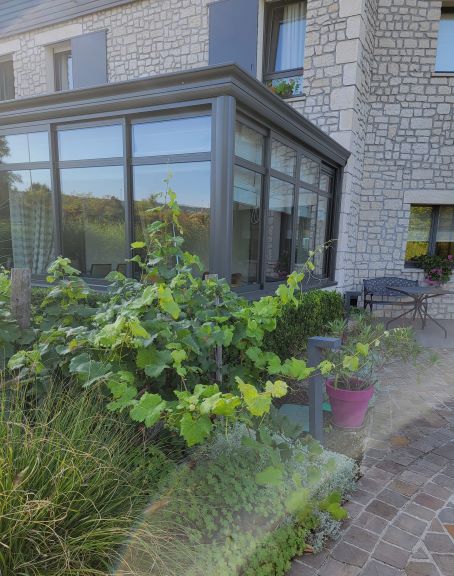
If You Go: Hotel Grains d’Argent is located at 1 All. du Petit Bois, Dizy, France
For more information: https://www.lesgrainsdargent.fr/
Deutz Champagne
Deutz, formerly Deutz & Geldemann, is a Champagne producer in the Ay region of Champagne, France. The house was founded in 1838 by William Deutz and Pierre-Hubert Geldermann.
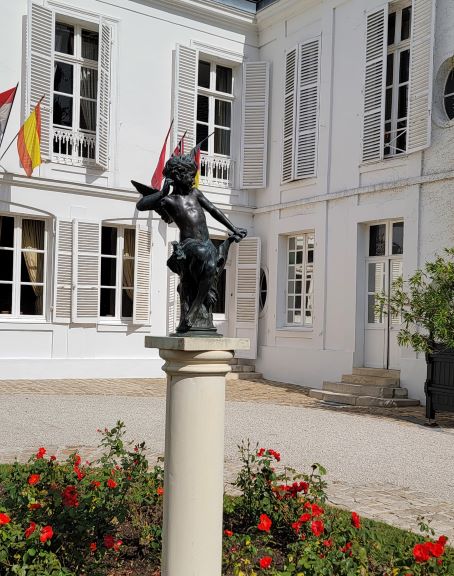
Since that time, the house of Deutz has been run and managed by successive generations of both the Deutz and the Geldermann families. The Rouzard family acquired the Duetz house in 1983. They also own Louis Roederer.
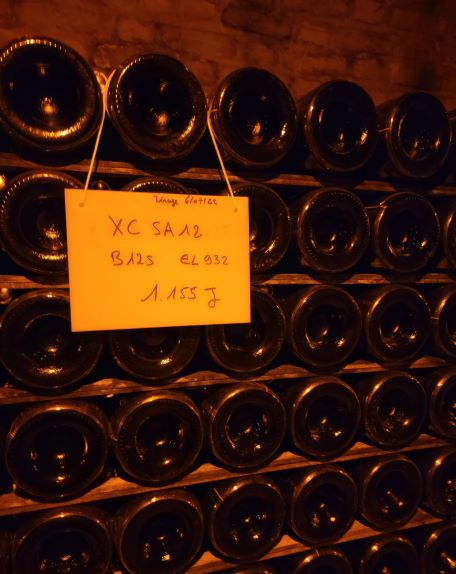
Deutz owns some of the Bordeaux wine estate of Chateau Vemous and the Rhone estate of Delas Feres. Branching out, Deutz formed a partnership with New Zealand producer Montana Wines. This was to make sparkling wines in the Marlborough wine region of New Zealand.
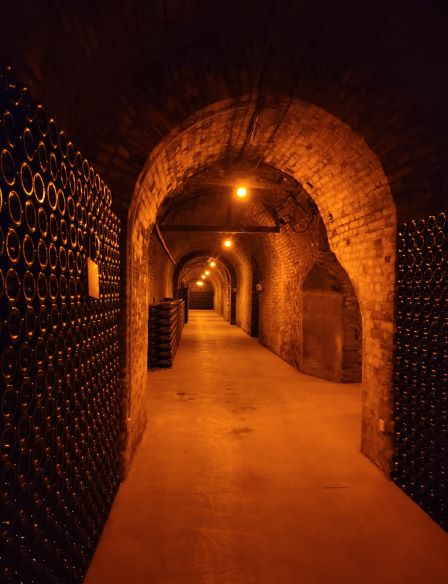
Touring the Deutz Champagne house, its impressive collection of Lalique crystal, and miles and miles of caves was a real treat when we were in Ay, France.
Even better, the Champagne tastings at the end of the tour was a terrific way to end a perfect day.
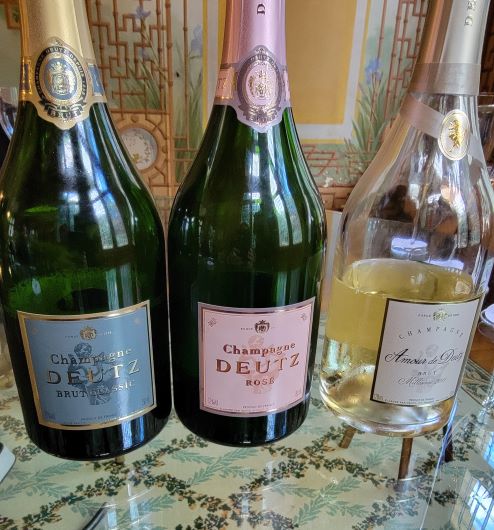
For more information, check out https://www.champagne-deutz.com/fr/intro/0
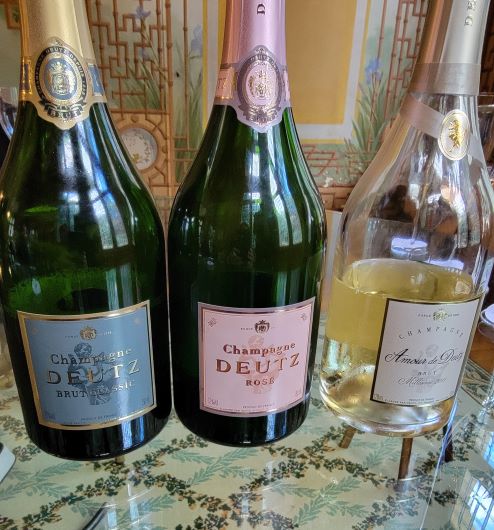

Bienbon in Saint Remy
On a side street in Saint Remy sits a small, inviting outdoor seating area for a small restaurant. Don’t pass this one up.
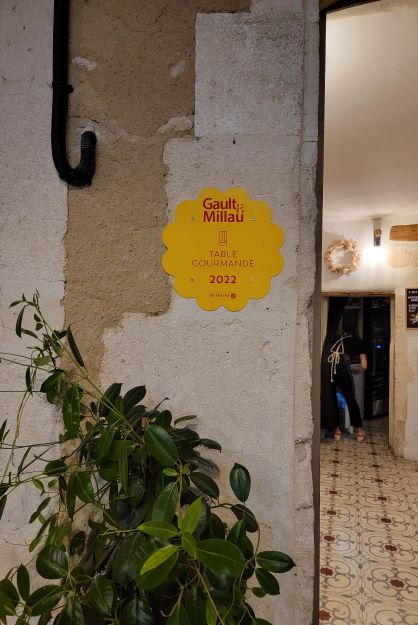
If the menu looked intriguing and delicious, it’s because the food is exactly that. Fresh ingredients that are well prepared greeted us at every course.
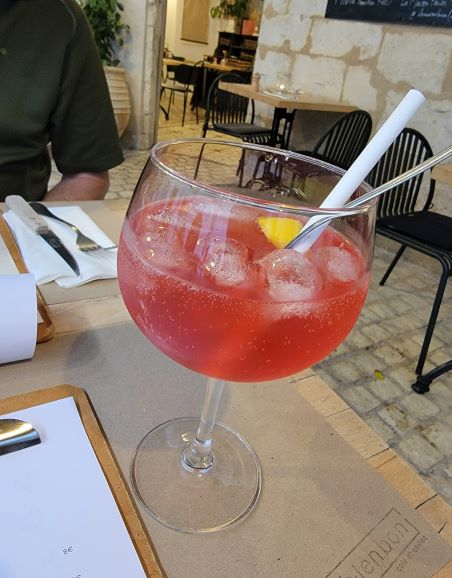
Their signature drink the night we were there was an interesting take on an Aperol Spritz. Refreshing. The fennel, sliced impossibly thin, paired with sweet cantaloupe that was sliced just as thin was topped with thin strips of Parmesan. A barely there dressing of lemon and olive oil enhanced the dish rather than overpowered it.
Poulpe, octopus, with corn cream and roasted padron peppers, was a delicious take on something you might not think to order. It was yummy.
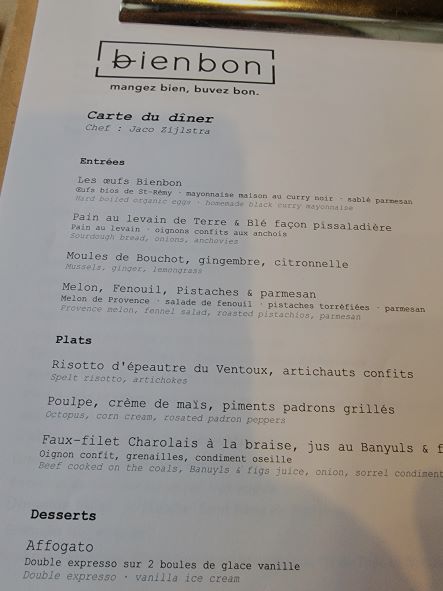
Affogato with house-made vanilla bean gelato was just the perfect ending to a wonderful meal.
Learn more about Bienbon at https://restaurantguru.com/Bienbon-Saint-Remy-de-Provence
If You Go: Bienbon is located at 17 Rue du Huit Mai 1945, Saint-Remy, France
